I've ridden the groundbreaking Verge TS Pro electric superbike – and it almost lives up to its Tron-like looks and hefty price tag
Taking a ride on the world’s first production in-wheel motor
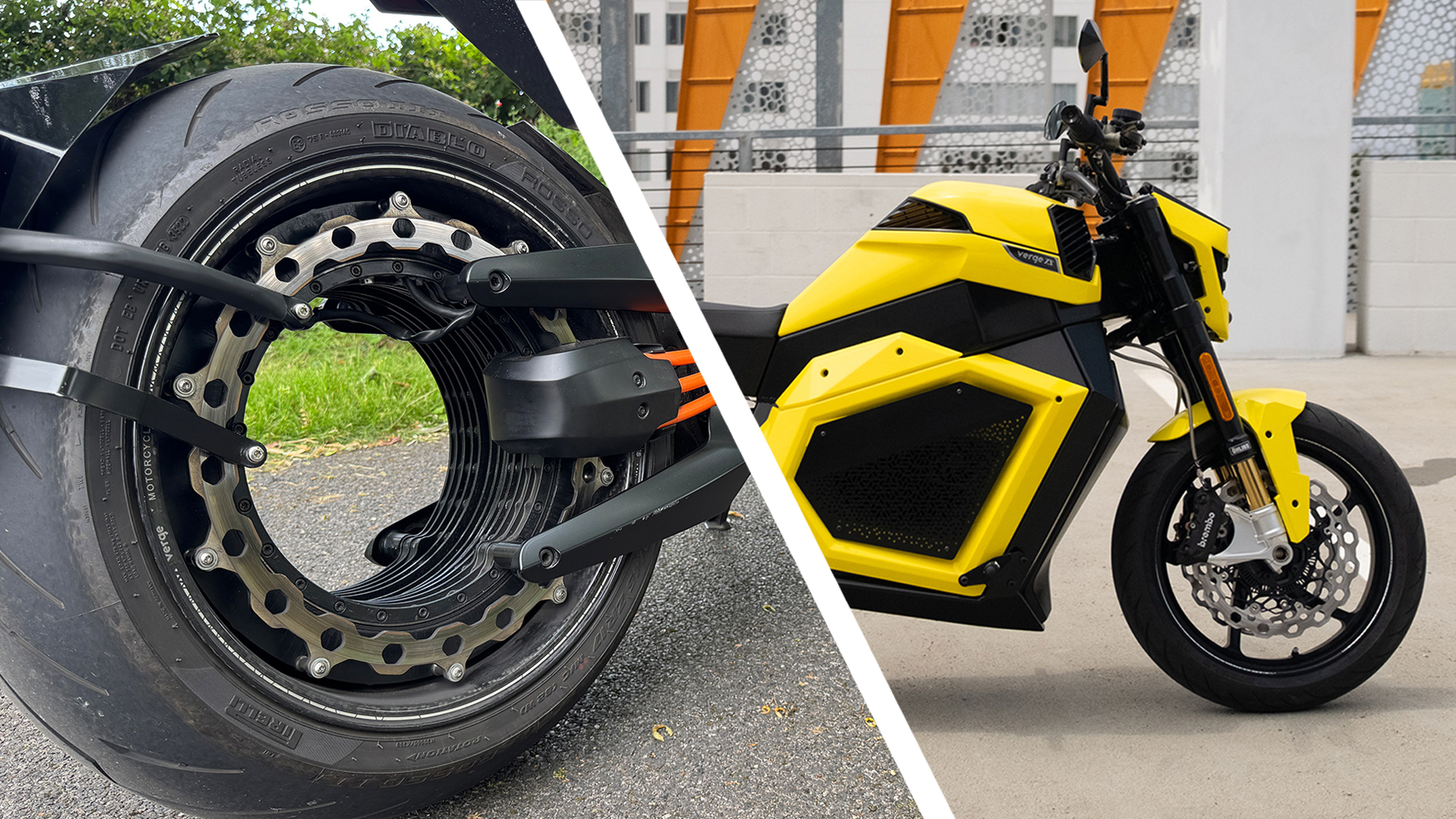
The most common utterance I heard while riding the Verge Motorcycles TS Pro was “hey, is that bike from Tron?”
When pulled up at traffic lights, parked at a cafe or simply wheeling the machine around, most passers-by couldn’t fathom the gaping hole in the rear wheel.
It is, in fact, the bike’s “engine”, but to the unassuming public, it looks more like something that could tear a hole in the space-time continuum.
Straight up, Verge Motorcycles doesn’t play by the rules. The Finnish company hails from a part of the world that's more synonymous with saunas and Santa Claus than pioneering two-wheeled machines. And the Verge TS Pro and Ultra are really just a shop window for the company’s in-wheel-motor and EV platform manufacturing business, Donut Lab.
The tasty sounding company is gunning to be the go-to name for compact, powerful e-motor technology that can offer an EV platform to OEMs that will underpin everything from aviation applications to space exploration machinery.
Why does this all matter? Well, Verge’s current two-wheel offerings are best viewed (and ridden) as highly futuristic modes of transport that showcase a novel way of approaching the electric motor and electric motorcycle as a whole, rather than the final word in tomorrow’s transport.
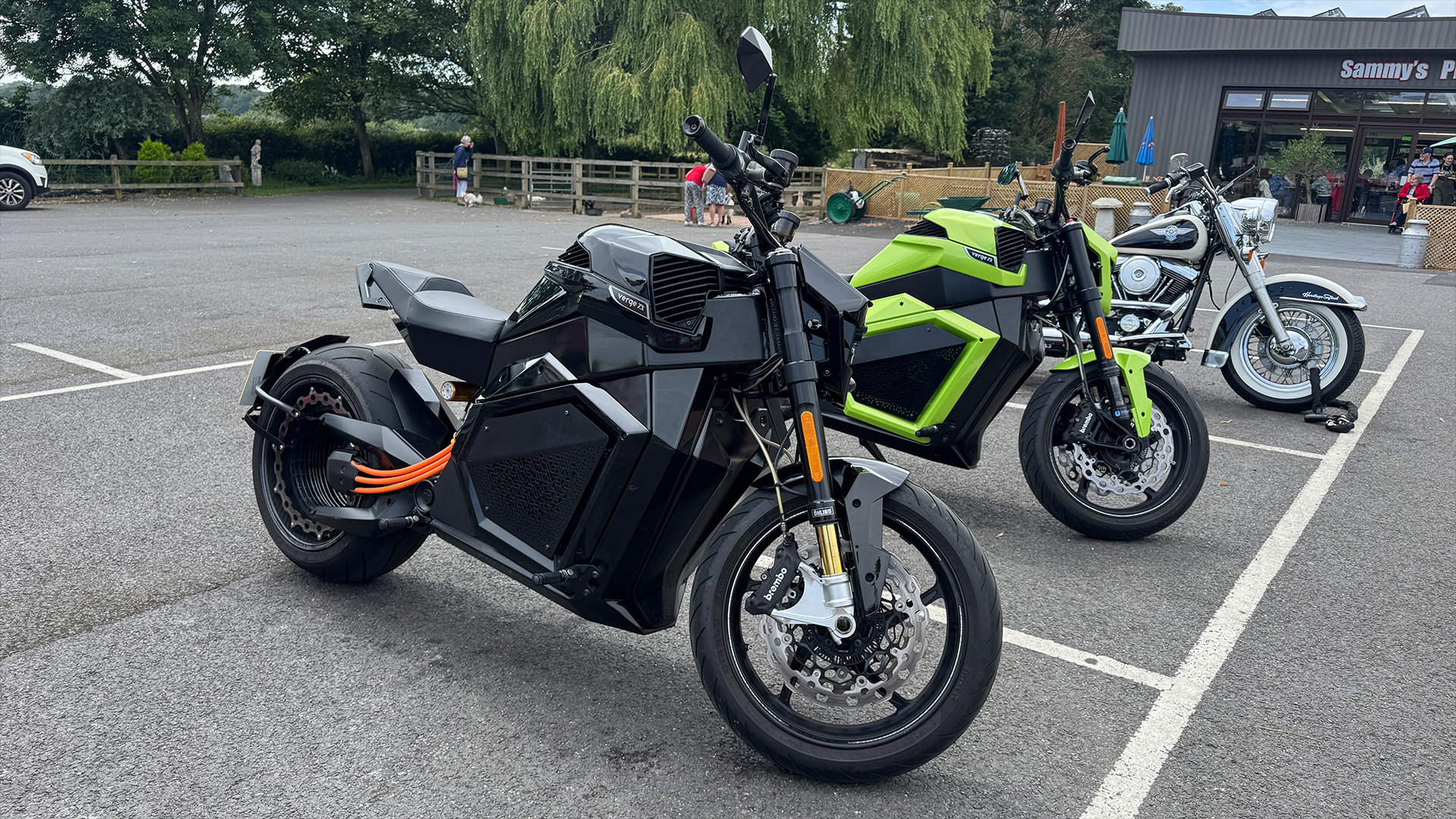
The $29,900 / £31,980 (around AU$46,000) asking price goes some way to cementing its status as an early adopter's dream machine. It is on a techy level with the only other production in-wheel motor vehicle we know of – the £135,000 (around $180,000 / AU$280,000) Renault 5 Turbo 3E, which isn't even on roads yet.
Sign up for breaking news, reviews, opinion, top tech deals, and more.
Electric motorcycles generally feel fast, but the acceleration offered here is borderline ridiculous.
But Verge is already selling bikes in chunks of Europe, while it is still working on the homologation of select models in the US, with a number of boutique retail spaces opening in recent months.
The availability of the all-singing, all-dancing, circa-£50,000 / $50,000 TS Ultra is also a little up-in-the-air, as the company states that it is coming to select markets early next year.
This is the machine that Verge revealed at CES back in 2023, complete with its Unreal Engine Starmatter software and "intelligence platform" that includes six cameras and two radars for advanced autonomous safety systems.
For now, we have to make do with the slightly more vanilla TS Pro that, after spending a day with it, is certainly madcap enough.
Torque of the town
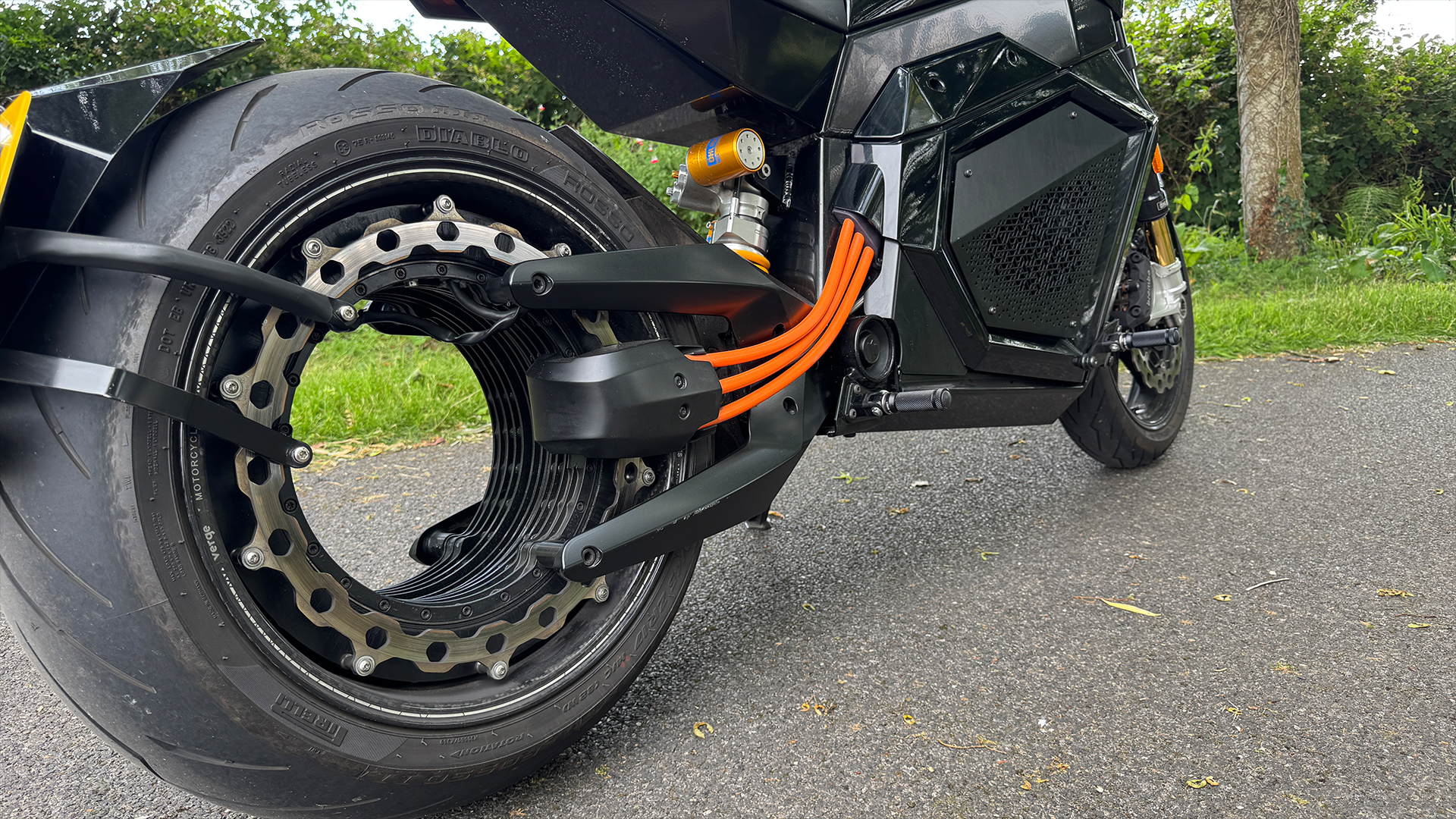
Allow me to get some raw statistics out of the way first: 1,000Nm of torque at the real wheel, a 0-60 seconds sprint time of 3.5 seconds and a claimed maximum range from the 20.2kWh lithium-ion battery pack of 217 miles... 37 miles more than the class-leading Zero DSR/X.
It’s about as easy to ride as a twist-and-go scooter and apparently much easier to maintain.
Whatever way you cut it, the Verge TS Pro is a formidable machine and it’s also a physically-imposing brute, what with its 1,540mm wheelbase, 245kg overall weight and enormous 240mm rear section tire.
That sort of rubber is typically the reserve of things like Harley-Davidson Fat Boys and the hulking Ducati Diavel muscle bike, but here it is required to wrap around the bamboozling contraption that powers it.
The rear wheel looks bereft of a traditional hub, but the inner surface of the wheel actually is the hub. It is bolted to the frame and the rest of the wheel spins around it. Minus the sugary sprinkles, you can see how Donut Lab got its name.
The entire set-up is made of bands of magnets that rotate around one another. Throw in pulses of electricity and the electromagnets cause the wheel to spin around its hub.
As a result, Verge can produce an unfathomable amount of torque at the rear wheel that propels the machine to ungodly speeds in the time it takes to blink. Electric motorcycles generally feel fast, but the acceleration offered here is borderline ridiculous.
A quick tour of the Verge TS Pro - the first production vehicle with an in-wheel motor and an eye-watering amount of torque on tap. pic.twitter.com/dJ8nQJsvaIJuly 30, 2025
However, the in-wheel motor is also about conserving space, so the company can stuff the frame with an enormous battery pack and offer the sort of electric range that other EV two-wheelers can only dream of.
The presence of a CCS charging port also means the Verge TS Pro can be fast-charged in around 35 minutes, which opens up the opportunity for proper adventure riding.
The monstrous performance is really a happy byproduct, and Verge tames this power via various riding modes, which range from a chilled-out Zen offering to the all-encompassing Beast mode. Riders can customize all of the performance parameters through a series of custom settings available on the touchscreen display.
Other novel factors include the position of the battery pack, which is mounted as far down in the body as possible in order to optimize the center of gravity and improve the handling.
There are also fold-away “feet-forward” pegs that transform the riding position from a traditional sports bike pose to something more akin to a cruiser.
Everything is controlled via the aforementioned touchscreen that is placed in the middle of the 'tank' and the bike is activated with a card, rather than the traditional key or key fob. Welcome to the future.
A modern-day monster
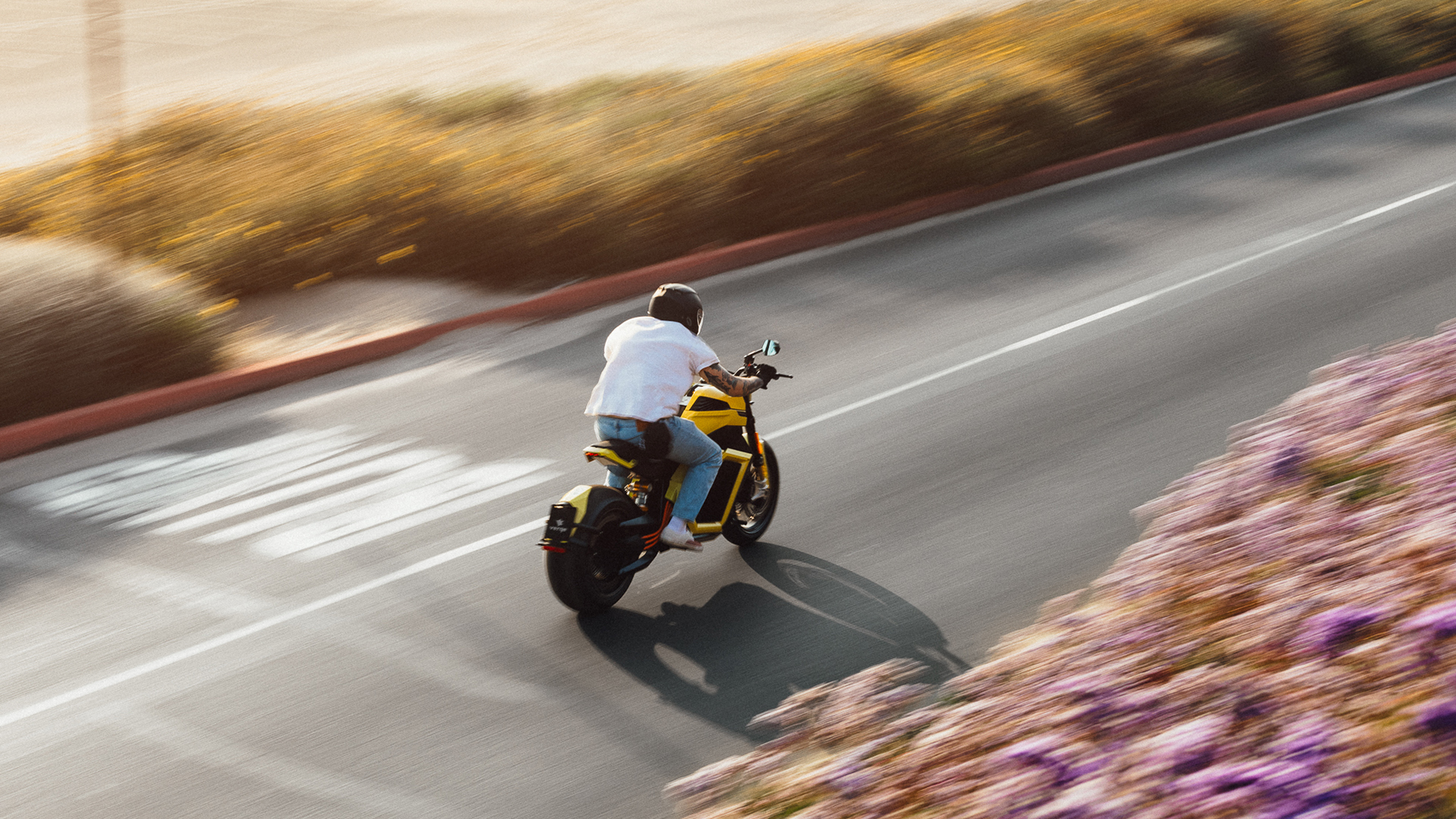
Understandably, I approached the first few moments with the Verge TS Pro with an element of trepidation. The weather was cold, slightly damp and there’s 1,000Nm of torque making its way to an enormous, cold rear tyre that needs to be manhandled at the best of times.
The bike has more than a whiff of prototype about it and comes across as the early stages of some very impressive technology.
But in Zen Mode, the machine proved surprisingly user-friendly. There is no clutch, no transmission, no driveshaft or other moving parts to worry about. It’s about as easy to ride as a twist-and-go scooter and apparently much easier to maintain.
Both the front and rear brake are mounted on the handlebars, which takes a bit of getting used to for those used to gas-powered motorcycles, but it does free up the legs to play around with the two foot peg positions.
Personally, I found the 'out-front' set-up a little awkward, seeing as I’m not very tall. The large tank made it feel like I had to stretch to reach the bars, so I opted to keep things in the standard, sportier position.
A twist of the throttle was enough to send the TS Pro sailing along the road at a clip, but flicking the machine into Beast Mode altered its characteristics completely.
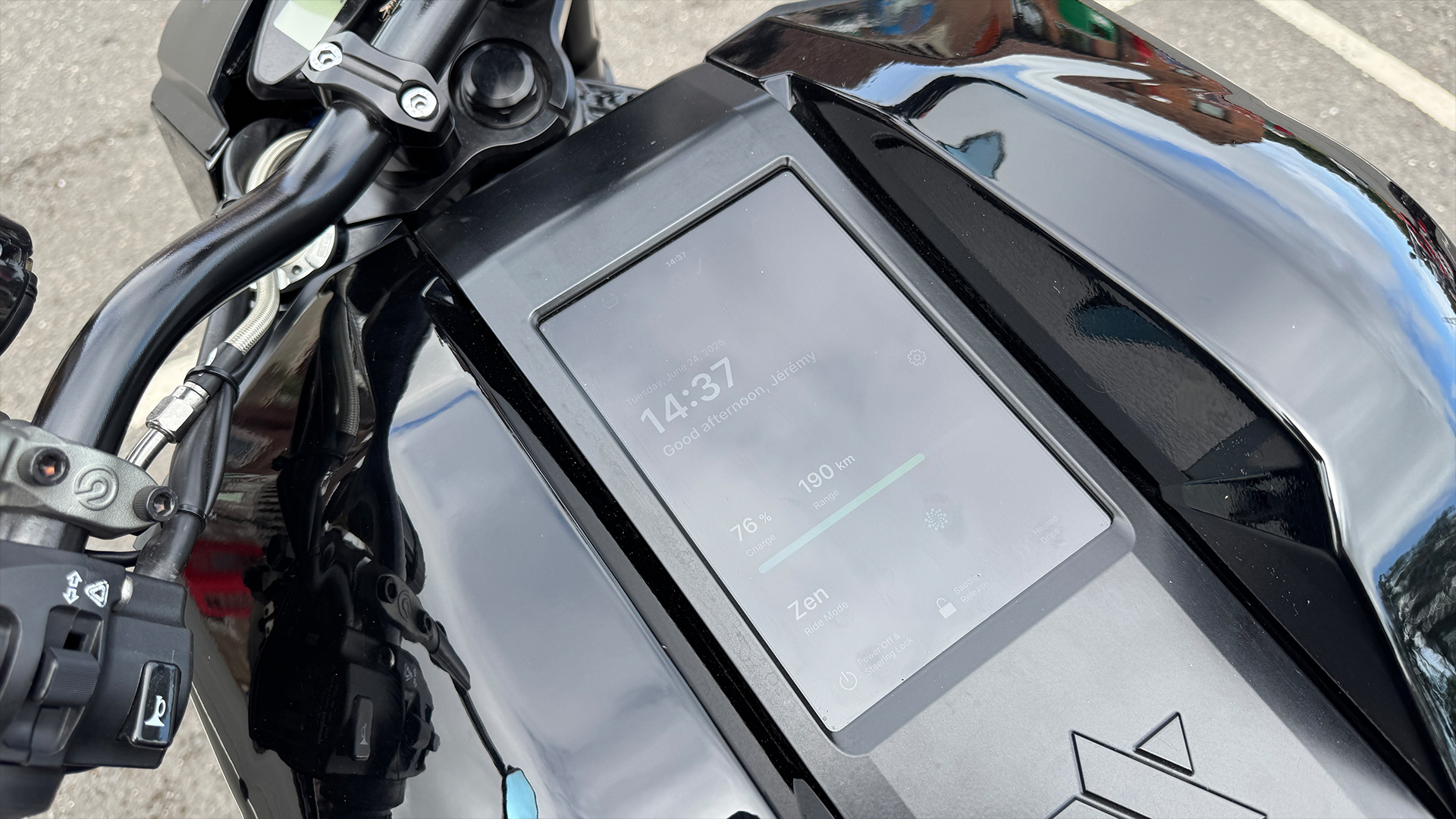
Unlike a modern gas sports bike, which generally wants to pop a wheelie every time you nail the throttle, the long wheel base and low center of gravity of the Verge TS Pro means it simply surges forward.
The rollercoaster analogy is often overused when describing performance EV acceleration, but it is totally apt here.
Only rather than being strapped into said rollercoaster, you have to hang on for dear life, knuckles turning white as hands attempt to stay connected to the handlebars until the electronically limited top speed of 124mph is reached. Phew.
I tried two versions of the same bike, one with an Öhlins suspension setup, which is said to be firmer and more designed for the race track. While the other sported a more forgiving, road-going Wilbers suspension unit.
Weirdly, I preferred the Öhlins set-up, but in both guises, it’s difficult to describe the Verge TS Pro as being especially nimble. The massive rear tire doesn’t really want to turn and the bike generally needs to be coerced through corners.
One of the machines I rode had a particularly sensitive throttle, too, which made modulation along some of the slower sections tricky. There was a point where the bike was confused about throttle on and throttle off, even though the hand position was unchanged.
That said, this can probably all be ironed out with some software updates, as the customizable engine braking can already be easily tweaked to suit. Digital sliders mean it can be adjusted to be as aggressive or non-existent as you want.
Personally, I preferred some fairly aggressive regen braking, so found myself anticipating the more flowing corners simply by throttling off. When more stopping power was needed, the gargantuan double Brembo calipers on the front did a respectable job of scrubbing off speed.
Unfinished business
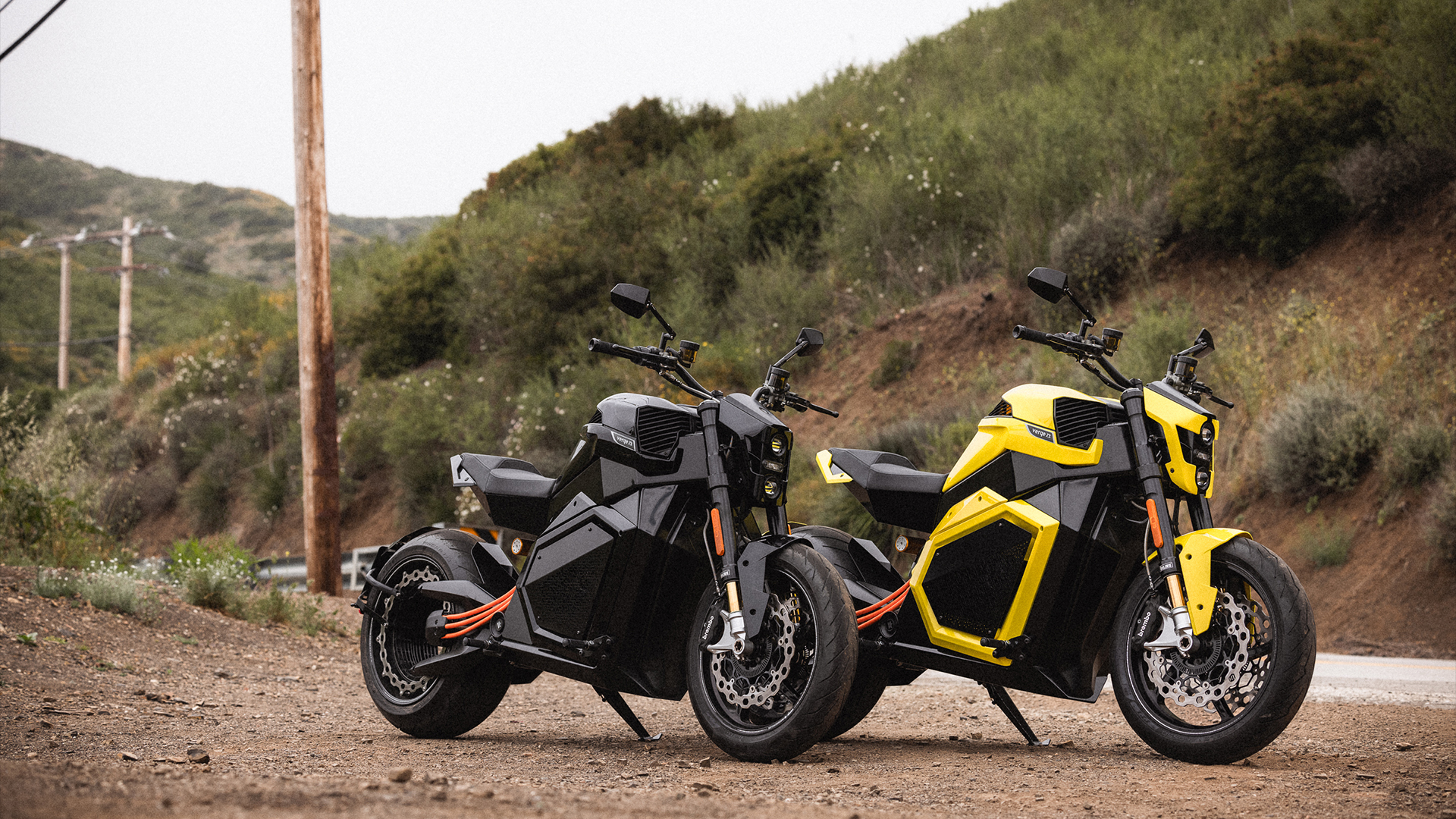
As a conversation starter, it is difficult to find anything much more effective than the Verge TS Pro – pretty much everyone and anyone will fire questions at you, so have a crib sheet ready.
But for the price, it isn’t perfect. The touchscreen is desperately underused, because in the Pro guise, it merely houses a few menus that can’t be accessed when on the move.
Also, its position makes it very difficult to see when riding, but it is ripe for offering navigation and a more encompassing digital experience where paired with a smartphone, for example. Even the cut-price Honda CUV e: I recently tested offered this.
Verge says that this is coming and its Startmatter system, which appears on the even pricier TS Ultra models, will offer over-the-air updates, as well as advanced active safety systems thanks to the inclusion of six cameras and two high-resolution radars.
This version will surely feel more like the tech-forward product that Verge is promoting, but we will have to wait and see how it pans out.
Dig a little deeper under the skin of the $29,900 / £31,980 TS Pro and you’ll find a number of off-the-shelf parts. The levers and the main speedo are aftermarket products, while large metal hinges that hold the seat on and allow access to the stowage area don’t feel particularly well integrated and there’s a lot of shapely but cheap-feeling plastic everywhere.

The bike has more than a whiff of prototype about it and comes across as the early stages of some very impressive technology – one that is expected to filter down into slightly less banzai yet more affordable models that can be produced on a larger, more polished scale.
For the early adopters, the price and minor presentation criticism won’t mean a thing, because the TS Pro has the attitude of something special that’s deserving of the attention.
Furthermore, it is proof that in-wheel motors work in a motorcycle application, freeing up more space for batteries and leading to an improved range – a point that motorcycle evangelists continually push.
But at this price, it is never going to be a volume player, and futuristic electric motorcycles can be snared for half the money, which is still too much.
You might also like
- I rode the world’s first fully electric adventure motorcycle – and it’s the future aside from one big drawback
- I review motorbikes for a living – here's why I'm excited about GoPro's new smart motorcycle helmet
- I rode the new Maeving RM1S – and it's the first truly convincing 125cc electric motorbike I've tried

Leon has been navigating a world where automotive and tech collide for almost 20 years, reporting on everything from in-car entertainment to robotised manufacturing plants. Currently, EVs are the focus of his attentions, but give it a few years and it will be electric vertical take-off and landing craft. Outside of work hours, he can be found tinkering with distinctly analogue motorcycles, because electric motors are no replacement for an old Honda inline four.
You must confirm your public display name before commenting
Please logout and then login again, you will then be prompted to enter your display name.